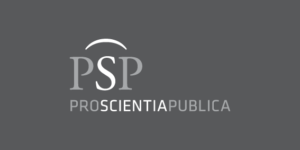Experimenting Dance Content for Historical Pedagogy in Nigeria: Lessons From the Imo State University Experience
DOI:
https://doi.org/10.15503/jecs2025.3.777.795Słowa kluczowe:
critical pedagogy, Indigenous Dance, Postnormality, NigeriaAbstrakt
Aim. In response to recent calls from scholars and cultural officers to resuscitate indigenous dances and other indigenous markers in Nigeria, this study aimed at exploring novel ways to revamp the content, teaching methods and appeal of indigenous dances in higher institutions in Nigeria. The project relied on a practical experiment at Imo State University, Nigeria to unveil how a vibrant and sustained indigenous dance tradition might be utilised as alternative pedagogical tool for history lessons which was excluded from the secondary school curriculum in 2009.
Methods. The performance project utilised dance in retelling the highpoints of Nigeria’s history from precolonial to postcolonial period. It utilised movements and rhythm to capture the highpoints of historical happenings within the periods of focus. Unstructured interviews, participant observation, case study approaches were utilised in data collection, while critical pedagogy, positive psychology, flow theory, and somatics were also adopted as methodological and analytical use in the project.
Results. From the dance experiment, the researchers observed that teaching approaches have always been at the heart of students' disinterest in dance courses in most Nigerian universities. They also noted that the potentials and appeal of indigenous dance be heightened when new realities are injected into its contents and a more liberal and inclusive approach adopted in the teaching and learning process.
Conclusion. In conclusion, key areas to revitalising and sustaining the appeal of indigenous dances among students include rethinking old pedagogical approaches by incorporating emerging/prevailing sociological realities into indigenous dance creations and performance in contemporary times.
Pobrania
Bibliografia
Abraham, G. Y. (2014). Critical Pedagogy: Origin, Vision, Action and Consequences. Kapet, 10(1), 90-98.https://kau.divaportal.org/smash/record.jsf?pid=diva2%3A768785&
dswid=6895
Alu, N. F., Egwuibe, N. C., Echem, S. O., Ogu, J. C., & Uzoagba, C. O. (2023). Effects of Utilizing Traditional Igbo Art and Cultural Activities as Informal Education Curricula for Decelerating Sarcopenia and Dynapenia among Old People in Eastern Nigeria. Ikenga Internationl Journal of Institute of African Studies. 24(1), 1 – 24. https://doi.org/10.53836/ijia/2023/24/1/003
Alsup, J. (2005). Teachers as people. Encounter: Education for Meaning and Social Justice, 18(1), 19-24.
Cherry, K. (2024). Is Democratic Leadership the Best Style of Leadership?. Very well Mind. https://www.verywellmind.com/what-is-democratic-leadership-2795315#:~:text=Democratic%20leadership%20isn't%20right,does%20have%20some%20potential%20downsides.&text=In%20some%20cases%2C%20group%20members,to%20the%20decision-making%20process
Csikszentmihalyi, M. (1996). Creativity: Flow and the psychology of discovery and invention. Harper Collins Publishers.
Csikszentmihalyi, M. (1990). Flow: The Psychology of Optimal Experience. Harper and Row.
Enghauser, R. (2007). The Quest for an Ecosomatic Approach to Dance Pedagogy. Journal of Dance Education, 7(3), 80-90.
Eni, E. K. (2013). Aesthetic considerations in contemporary Nigerian theatre design and technology. International Journal of Arts and Humanities, 2(5), 157-167.
Fischman, G., & McLaren, P. (2005). Rethinking Critical Pedagogy and the Gramscian and Freirean Legacies: From Organic to Committed Intellectuals or Critical Pedagogy, Commitment, and Praxis. Cultural Studies ↔ Critical Methodologies, 5(4), 425-446. https://doi.org/10.1177/1532708605279701
Freire, P. (1970a). Pedagogy of the Oppressed. Continuum Books.
Freire, P. (1970b). Education for Critical Consciousness. Continuum International Publishing Group.
Gaztambide-Fernández, R. A. (2008). Student Centred Teaching and Motivation. Curriculum Inquiry, 38(3), 233–265. http://www.jstor.org/stable/25475906
Giroux, H. A. & Giroux, S. S. (2006). Challenging Neoliberalism’s New World Order: The Promise of Critical Pedagogy. Cultural Studies, Critical Methodologies, 6(1), 21-32.
Jackson, S., & Csikszentmihalyi, M. (1999). Flow in Sports: the keys to optimal experiences and performances. Human Kinetics.
Leijen, Ä., Lam, I., Wildschut, L., Simons, P. R. J., & Admiraal, W. (2009). Streaming video to enhance students’ reflection in dance education. Computers and Education, 52(1), 169-176.
Leijen, Ä., Admiraal, W. F., Wildschut, L., & Simons, P. R. J. (2008). Pedagogy before technology: what should an ICT intervention facilitate in practical dance classes? Teaching in Higher Education, 13(2), 219-231.
Loutzaki, I. (2019). Entry: Dance. In J. Sturman (Ed.), The SAGE International Encyclopedia of Music and Culture (pp. 717-723). SAGE Publications.
Łucznik, K. & May, J. (2021). Measuring Individual and Group Flow in Collaborative Improvisational Dance. Thinking Skills and Creativity, 40. https://doi.org/10.1016/j.tsc.2021.100847
Luitel, B. C.; Dahal, N. & Pant, P. B. (2022). Critical Pedagogy: Future and Hope. Journal of Transformative Praxis, 3(1), 1-8. https://doi.org/10.51474/jrtp.v3i1.599
Luitel, B. C, & Dahal, N. (2020). Conceptualizing transformative praxis. Journal of Transformative Praxis, 2(1), 1-7. https://doi.org/10.51474/jrtp.v2i1.530
Marcuse, H. (1972). Studies in Critical Philosphy. New Left Books.
McKernan, J. A. (2013). The Origins of Critical Theory in Education: Fabian Socialism as Social Reconstructionism in Nineteenth-Century Britain. British Journal of Educational Studies, 61(4), 417-433.
McLaren, P. (1998). Life in schools: An introduction to critical pedagogy in the foundations of education. Longman.
Mullamaa, K. (2017). Student Centred Teaching and Motivation. Advances in Social Sciences Research Journal, 4(16), 95-108. https://doi.org/10.14738/assrj.416.3593
Nwaru, C., & Abakporo, P. C. (2022). Securing the Future of Indigenous Dance in Nigeria. Creative Artist: Journal of Theatre and Media Studies, 16(2), 84–98.
Nwaru, C. (2017). The Diachronic Development of Traditional Dance in Nigeria. JOTAMS: A Journal of Theatre and Media Studies, 2(2), 38-49.
Nwaru, C. (2014). Synergism of Dance Theory and Practice: The Requisite for Dance Development in Nigeria. Art and Design Review, 2(4), 85 – 90. http://dx.doi.org/10.4236/adr.2014.24011
Obinyan, E. V, & Otoide, J. (2021). The Problem of Kakistocracy in Nigerian Democracy. International Journal of Theology and Reformed Tradition. 17, 68–84.
Ododo. S. E., & Igweonu, K. (2001). Dance, drama and dance theatre: Unknotting the conflicting perception. The performer: Ilorin Journal of the Performing Arts, (3): 51 – 58.
Okeke, A. C., & Ofoedu, U. O. (2022). Applied Theatre as an interventionist model for theatre for development projects: the Itchi-Agu experience. Ikenga Internationl Journal of Institute of African Studies. 23 (1), 1 – 15. https://doi.org/10.53836/ijia/2022/23/1/009
Olabimtan, B. (2022). Soyinka: Removal of history from Schools curriculum can never erase memories of Biafra. The Cable. https://www.thecable.ng/soyinka-removal-of-history-from-schools-curriculum-can-never-erase-memories-of-biafra/
Onyishi, C. N. (2023). Teachers’ use of inclusive education practices for learners with neuro-developmental disorders in Enugu State, Nigeria. Ikenga Internationl Journal of Institute of African Studies, 23 (3), 1 – 16. https://doi.org/10.53836/ijia/2022/23/3/003
Sardar, Z. (2010). Welcome to Postnormal Times. Futures, 42(5), 435–44. https://doi.org/10.1016/j.futures.2009.11.028
Schupp, K., & Clemente, K. (2010). Bridging the Gap: Helping Students from Competitive Dance Training Backgrounds Become Successful Dance Majors. Journal of Dance Education, 10(1), 25-28
Seligman, M. (2002). Authentic Happiness: Using the New Positive Psychology to Realize Your Potential for Lasting Fulfillment. Free Press.
Sims, M. & Erwin, H. (2012). A Set of Descriptive Case Studies of Four Dance Faculty Members' Pedagogical Practices. Journal of Dance Education, 12(4), 131-140.
Stinson, S. W. (2004). My body/myself: Lessons from dance education. In L. Bresler (Ed.), Knowing bodies, moving minds: Towards Embodied Teaching and Learning (pp. 153-167). Kluwer Academic.
Stinson, S. W. (2005). The Hidden Curriculum of Gender in Dance Education. Journal of Dance Education, 5(2), 51-57.
Stinson, S. W. (2010). Questioning Our Past and Building a Future: Teacher Education in Dance for the 21st Century. Journal of Dance Education, 10(4), 136-144.
Taylor, S. (2005). Multilateral and Holistic Perspectives in Contemporary Performance Theory: Understanding Patrice Pavis’s Integrated Semiotics. Journal of Dramatic Theory and Criticism, XIX(2), 87-110. https://journals.ku.edu/jdtc/article/view/3510
Tavakoli, H. (2012). A Dictionary of Research Methodology and Statistics in Applied Linguistics. Rahnama Press.
Turner, M., Grauert, R., & Zallman, A. (1971). New Dance: Approaches to Non-literal Choreography. University of Pittsburgh Press.
Tyohemba, H. (2022) 13 Years After, Federal Governmentt Reintroduces History Into Curriculum. Leadership For God and Country. https://leadership.ng/13-years-after-federal-govt-reintroduces-history-into-curriculum/#google_vignette
Udoka, A. (2005). Dance in Search of a Nation: Towards a sociopolitical Redefinition of Dance in Nigeria.” In A. Yerima, O. R. Bakare & A. Udoka, Critical Perspectives on Dance in Nigeria (pp. 276 – 292). Kraft Books.
Sööt, A. & Viskus, E. (2014). Contemporary Approaches to Dance Pedagogy: The Challenges of the 21st Century. Procedia - Social and Behavioural Sciences, 112, 290 – 299.
Warburton, E. C. (2019) Dance Pedagogy. In S. Dodds (Ed.) The Bloomsbury Companion to Dance Studies. Bloomsbury Academic. 81 – 110. https://doi.org/10.5040/9781350024489.ch-003
Pobrania
Opublikowane
Numer
Dział
Licencja
Prawa autorskie (c) 2025 Princewill Chukwuma Abakporo, Stanley Timeyin Ohenhen, Fidelis Enang Egbe, Uche Okey Ofoedu, Mashkhura Aminovna Кhafizova , Peter Kondrla

Utwór dostępny jest na licencji Creative Commons Uznanie autorstwa 4.0 Międzynarodowe.
CC-BY
Authors retain copyright and grant the journal right of first publication with the work simultaneously licensed under a Creative Commons Attribution License that allows others to share the work with an acknowledgement of the work's authorship and initial publication in this journal. All authors agree for publishing their email adresses, affiliations and short bio statements with their articles during the submission process.


